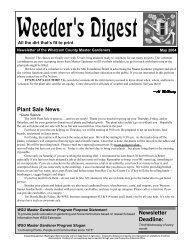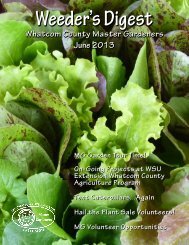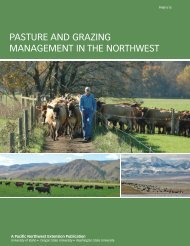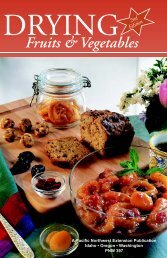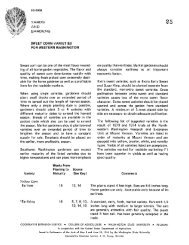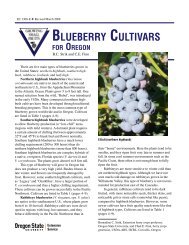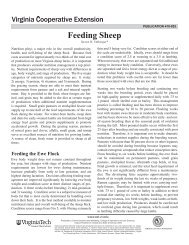Where Does Whatcom County Get its Food? - WSU Whatcom ...
Where Does Whatcom County Get its Food? - WSU Whatcom ...
Where Does Whatcom County Get its Food? - WSU Whatcom ...
You also want an ePaper? Increase the reach of your titles
YUMPU automatically turns print PDFs into web optimized ePapers that Google loves.
in <strong>Whatcom</strong> <strong>County</strong>. Districts also receive volume discounts when purchasing through national distributors; a<br />
concern is that if too much local food is purchased, that volume discount would be reduced.<br />
Available facilities<br />
Costs for processing food are a factor, as many institutions do not have the funds to pay for labor or for in-house<br />
processing of raw food—the typical state in which food from local farms is delivered (e.g., whole carrots versus<br />
carrot sticks). Institutions may also lack the facilities, such as cold storage and preparation equipment. <strong>Food</strong><br />
service providers worry about using funds to pay for in-house processing when the money could be used for food<br />
purchasing instead. The product delivered must be consistent in size for ease of use; this consistency is not always<br />
available from smaller farms. Independent schools (those not part of a public school district) have also run into<br />
issues with not having kitchen facilities that are up to health department standards and the costs to reach those<br />
standards are too high.<br />
Seasonality and availability<br />
The school year does not correspond well with the local growing season. Some crops, such as apples, are an<br />
exception, and these products are finding their way into institutional cafeterias. <strong>Food</strong> service providers surveyed<br />
often noted that availability of local produce is a large issue, especially during the winter months. They worried<br />
about the ability of local farms to supply enough produce for an entire school or school district. One food service<br />
director noted that institutions sometimes need to be able to increase the quantity of food they receive on short<br />
notice. One strategy currently being employed by local farms is to join together through the non-profit farm<br />
organization Growing Washington to sell produce collectively to Western Washington University (WWU), thus<br />
allowing them to meet the University’s quantity and availability demands. Both the farms and the University<br />
report success in this venture.<br />
Delivery<br />
<strong>Food</strong> service directors noted that receiving deliveries from many smaller trucks throughout the day can be<br />
disruptive to their schedules and that receiving one shipment from a large supplier fit better with the way their<br />
programs are run. One food service director noted that Growing Washington (see above) was doing a good job<br />
coordinating delivery from several smaller farms, and another noted that one farm from Snohomish <strong>County</strong> was<br />
easy to work with (they did not give a specific reason for this).<br />
<strong>Food</strong> safety liability<br />
<strong>Food</strong> service providers are very concerned about food safety and liability issues. Many institutions require high<br />
insurance coverage for their vendors that may be too expensive for small-scale, local farmers. For example,<br />
WWU’s food service provider, Sodhexo, requires vendors to carry a $5 million liability insurance policy. In<br />
addition, products must be traceable to a farm; if several farms are providing one product for cooperative<br />
delivery, this kind of traceability may not be possible. One institutional food service director noted the potential<br />
food safety risk involved with in-house cutting of produce.<br />
Solutions<br />
Those involved with this CFA talked with people connected to farm-to-school programs, who offered some<br />
possible solutions to the above barriers:<br />
• Coordinating several smaller growers to provide smaller quantities of one or two staple produce items<br />
and merge the products to have enough to supply a school. This is currently being done by Growing<br />
Washington, and significant room exists for expansion of this strategy.<br />
27




